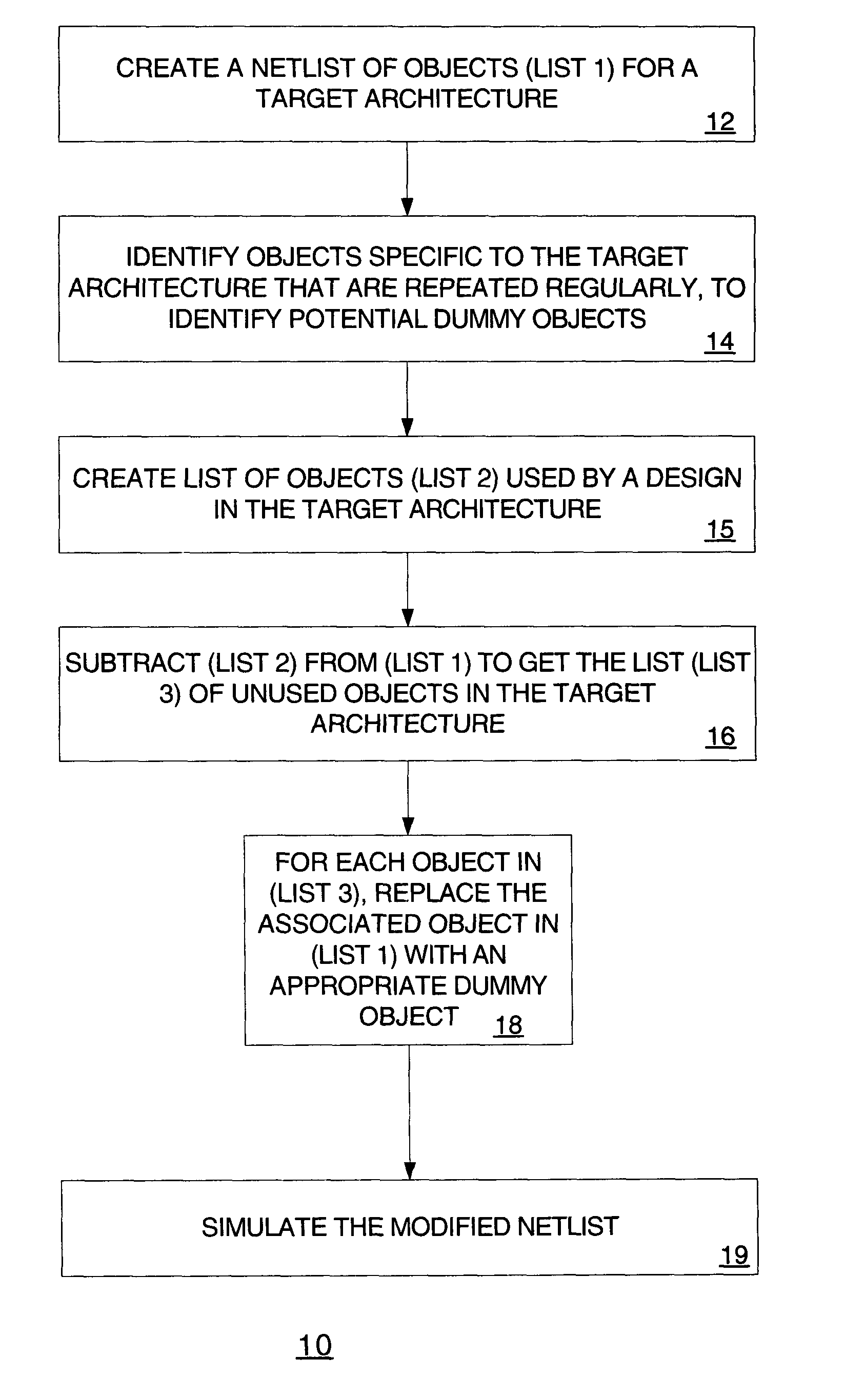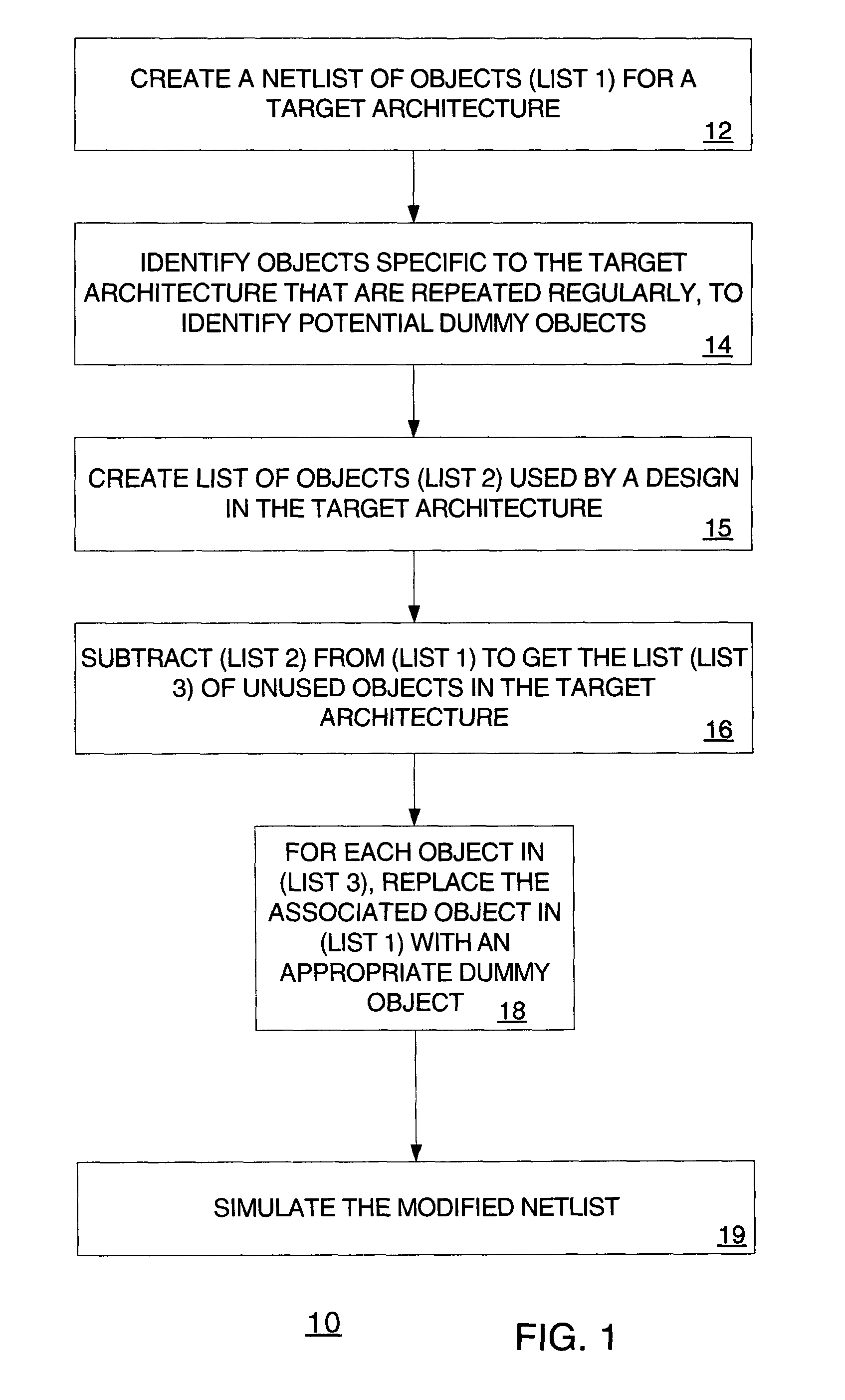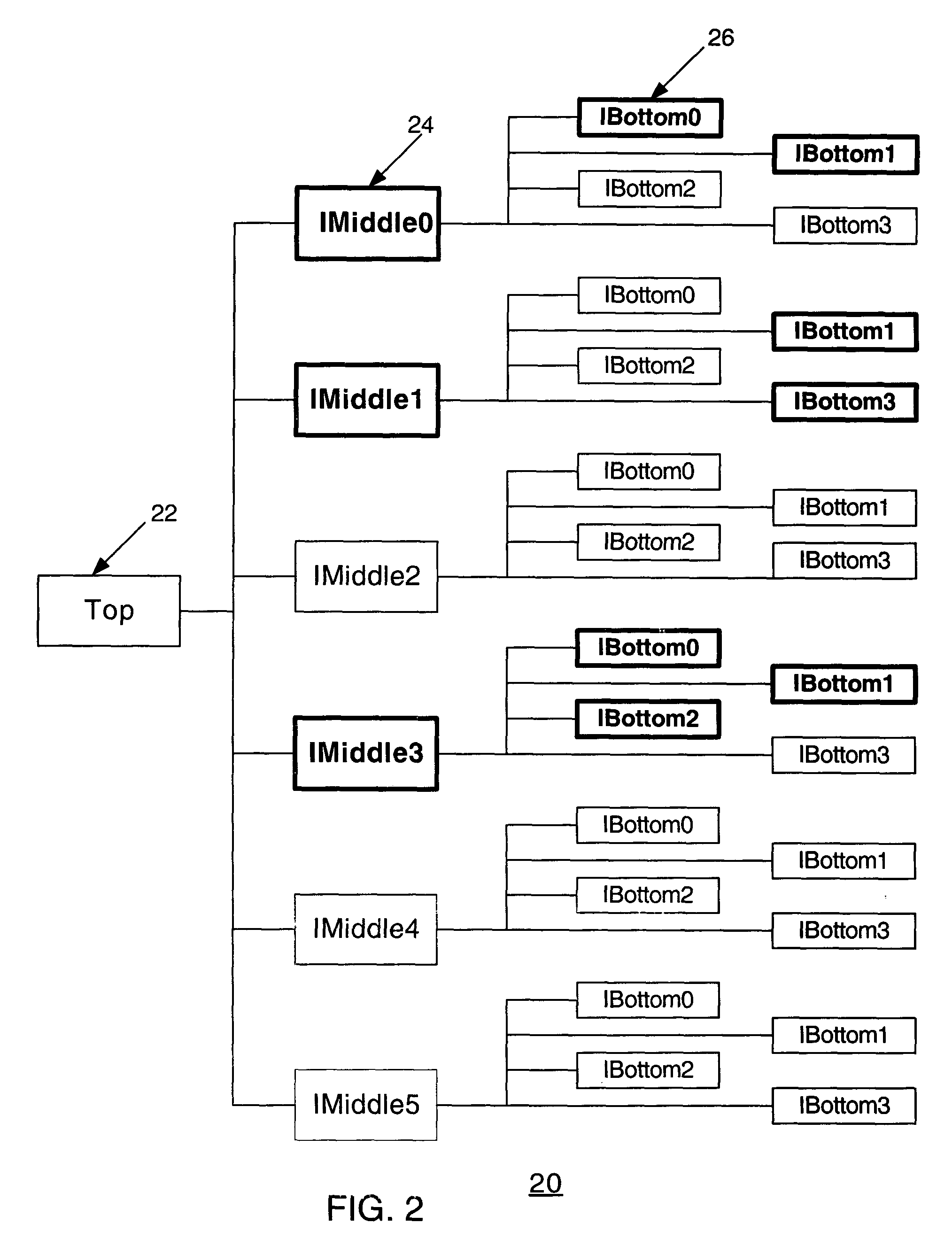Dummy block replacement for logic simulation
a logic simulation and dummy block technology, applied in the field of logic simulation, can solve the problems of ineffective simulation and verification solutions for larger members of the family, inability to simulate and verify such devices using such large netlists, and inability to achieve large-scale simulation and verification solutions, so as to reduce the time needed for similar processing, reduce the size of the netlist, and achieve significant performance benefits
- Summary
- Abstract
- Description
- Claims
- Application Information
AI Technical Summary
Benefits of technology
Problems solved by technology
Method used
Image
Examples
Embodiment Construction
[0017]Embodiments in accordance with the present invention provide a method, system, and apparatus for processing signals with a modified netlist and reducing netlist sizes using DBR. DBR is particularly useful when attempting to simulate hardware holistically where the netlist corresponding to the entire hardware system is inordinately large. DBR can certainly be equally as useful when the component parts of a target hardware architecture under simulation also has a large corresponding netlist. Using DBR as embodied in accordance with one aspect of the present invention, all instances or objects of pertinent or redundant blocks (for an FPGA design, for example) are found and collated from known information about a test design for a target architecture. DBR can then essentially selectively “remove” unused blocks (or objects) from an original netlist. In the context of Verilog, the act of “removing”, “emptying” or “replacing” an object or instance should be understood herein as creat...
PUM
 Login to View More
Login to View More Abstract
Description
Claims
Application Information
 Login to View More
Login to View More - R&D
- Intellectual Property
- Life Sciences
- Materials
- Tech Scout
- Unparalleled Data Quality
- Higher Quality Content
- 60% Fewer Hallucinations
Browse by: Latest US Patents, China's latest patents, Technical Efficacy Thesaurus, Application Domain, Technology Topic, Popular Technical Reports.
© 2025 PatSnap. All rights reserved.Legal|Privacy policy|Modern Slavery Act Transparency Statement|Sitemap|About US| Contact US: help@patsnap.com



